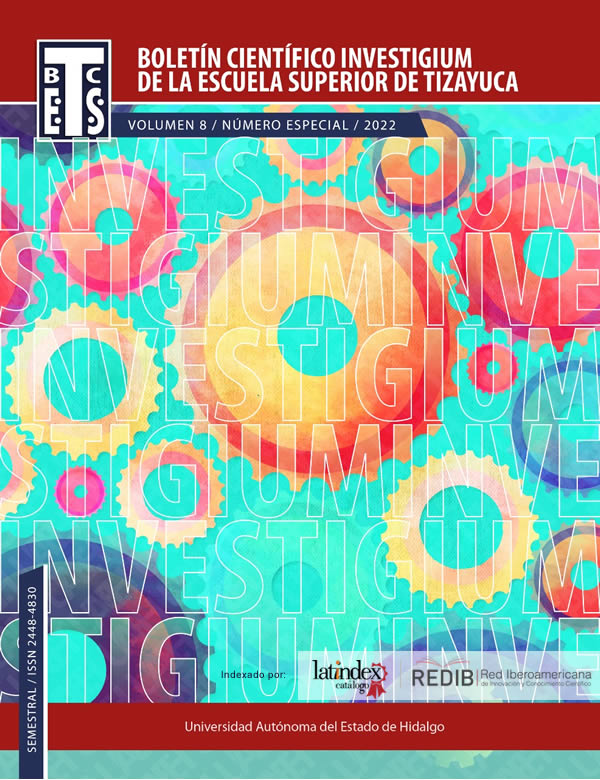Public transport trip planner using the GTFS standard
DOI:
https://doi.org/10.29057/est.v8iEspecial.9994Keywords:
Trip planner, GTFS, Public transport, Urban mobilityAbstract
Nowadays, the design and planning of road layouts in modern cities represents a great challenge. In addition, the massive use of public transportation and the current complexity of the different routes that operate in cities has caused citizens to require help when planning a trip. This problem is addressed by various software systems that allow citizens to reach a destination using a private car, such as Waze or Google Maps. Although these systems are of great help to end users, they have the disadvantage of being closed systems owned by a company. This means that it is not possible for developers who wish to create mobility applications to reuse these resources. Currently, many transportation agencies use GTFS (General Transit Feed Specification) data as the standard format for publishing their data. In this paper we present a trip planner, which uses the standard GTFS format. We present this planner using the case study of Mexico City.
Downloads
References
redeuslac.org, «Economía Urbana - REDEUSLAC,» 2021. [En línea]. Available: https://redeuslac.org/lineas-de-accion/economia-urbana/#:%7E:text=Las%20ciudades%2C%20que%20concentran%20capi-tal,productividad%20y%20la%20capacidad%20innovadora. [Último acceso: 2 Octubre 2022].
R. Montezuma, «Ciudad y transporte: la movilidad urbana,» Cepal, 2003.
C. Velásquez, «Espacio público y movilidad urbana: Sistemas Integrados de Transporte Masivo (SITM),» pp. 21-90, 2015.
A. Bull, Congestión de tránsito el problema y cómo enfrentarlo, 206 ed., Cepal, 2003.
D. López, A. Lozano, H. González, A. Guzmán y F. Maldonado, «Hiperpuma: Sistema Multimodal de Información al Viajero,» de La movilidad en la Ciudad de México Impactos, conflictos y oportunidades, IG, 2018, pp. 119-151.
A. Colque, R. Valdivia, M. Navarrete y S. Aracena, «Un sistema de información geográfico para el transporte público basado en el estandar GTFS realtime,» Scielo, vol. 29, pp. 51-62, 2019.
Google Transit, «Descripción general de GTFS estáticas | Transporte público estático,» 2021. [En línea]. Available: https://developers.google.com/transit/gtfs?hl=es. [Último acceso: 2 octubre 2022].
M. Catala, «Expanding the Google Transit Feed Specification to Support Operation and Planning,» National Center for Transit Research, 2011.
Google transit, «Guías GTFS,» 2021. [En línea]. Available: https://developers.google.com/transit/gtfs/guides. [Último acceso: 28 Septiembre 2022].
J. Wong, R. Landon, W. Kari y H. Regan, «Open Transit Data: State of the Practice and Experiences from Participating Agencies in the United States,» Transportation Research Broad, 2013.
Quadminds, «¿Qué es un Sistema de Planificación de Rutas?,» 1 Junio 2022. [En línea]. Available: https://www.quadminds.com/blog/sistema-de-planificacion-de-rutas/. [Último acceso: 4 Octubre 2022].
B. Sánchez, «6 beneficios de un sistema de planificación de rutas,» 22 Junio 2022. [En línea]. Available: https://www.netlogistik.com/es/blog/6-beneficios-que-brinda-un-sistema-de-planificacion-de-rutas. [Último acceso: 4 Octubre 2022].
Fundación Telefónica, «Smart Cities: un primer paso hacia la internet de las cosas,» Ariel, 2011.
A. Vagner, «Trip planning algorithm for GTFS data with NoSQL structure to improve the performance,» Jatit, vol. 99, nº 10, p. 10, 2021.
A. Queiroz, V. Santos, D. Nascimento y C. Pires, «Conformity Analysis of GTFS Routes and Bus Trajectories,» UFCG, pp. 1-6, 2019.
X. Kong, M. Li, T. Tang, K. Tian, M. Moreira y F. Xia, «Shared Subway Shuttle Bus Route Planning Based on Transport Data Analytics,» IEEE Transactions on Automation Science and Engineering, vol. 15, pp. 1507-1520, 2018.
T. Szincsák y A. Vágner, «Public transit schedule and route planner application for mobile devices,» Eger, pp. 153-161, 2015.
W. Li, X. Chen y B. Yang, «Bus Travel Transit Path Query Algorithm Based on Ant Algorithm,» Third International Conference on Genetic and Evolutionary Computing, nº 11106229, pp. 665-669, 2009.
Hmong, «Especificación general de feeds de tránsito HistoriayAplicaciones,» 2021. [En línea]. Available: https://hmong.es/wiki/General_Transit_Feed_Specification. [Último acceso: 2 Octubre 2022].
SEMOVI, «Secretaría de Movilidad (SEMOVI),» 28 Septiembre 2022. [En línea]. Available: https://datos.cdmx.gob.mx/dataset/gtfs#:~:text=El%20GTFS%20est%C3%A1tico%20es%20un,y%20planificaci%C3%B3n%20de%20viajes%20multimodales. [Último acceso: 4 Octubre 2022].
Codingame, «El algoritmo de Dijkstra - Los caminos más cortos con el algoritmo de Dijkstra,» 2020. [En línea]. Available: https://www.codingame.com/playgrounds/7656/los-caminos-mas-cortos-con-el-algoritmo-de-dijkstra/el-algoritmo-de-dijkstra. [Último acceso: 2 Octubre 2022].
A. Lima, «Introducción a las redes sociales usando NetworkX en Python – Acervo Lima,» 2021. [En línea]. Available: https://es.acervolima.com/introduccion-a-las-redes-sociales-usando-networkx-en-python/. [Último acceso: 2 Octubre 2022].
Networkx, «networkx.org,» 2022. [En línea]. Available: https://networkx.org/documentation/stable/reference/generated/networkx.convert_matrix.from_pandas_edgelist.html#networkx.convert_matrix.from_pandas_edgelist. [Último acceso: 25 Septiembre 2022].
R. Beltran y M. Pérez-Ramírez, «Simulador ROV multiplayer para escenarios petroleros submarinos,» Research in Computing Science, p. 74, 2017.
M. Lewin, «Working with Base Layers - Leaflet.js Succinctly Ebook,» 22 Marzo 2016. [En línea]. Available: https://www.syncfusion.com/succinctly-free-ebooks/leafletjs/working-with-base-layers. [Último acceso: 2 Octubre 2022].


















